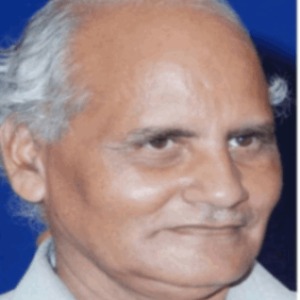Title : Rhodium- hydrotalcite catalyzed effective heterogeneous transformation of carbon oxides to organic chemicals
Abstract:
Transformation of carbon oxides, carbon monoxide and carbon dioxide, to organic chemicals is demanding area of research due to environmental concern on one side and utilization of the carbon oxides as feed stocks to produce chemicals on the other side. Severe environmental concerns have been raised by the rapid rise in CO2 levels in the atmosphere and there is a potential opportunity to utilize CO2 to produce value-added chemicals. In our focused research to develop heterogeneous catalysts for catalyzing transformation of carbon oxides, since heterogeneous catalysts have the potential benefit of easy separation and recycling of the catalyst as well as easy purification of the products, a rhodium- hydrotalcite (Rh-HT) heterogeneous catalyst is developed. Hydrotalcite is a layered double hydroxide solid soft base and had played potentially double role as solid support for the homogeneous Rh complex catalyst as well as base. Under homogeneous conditions by metal/metal complexes-based catalysts, in the reactions of carbon oxides, additionally liquid base and/or additives are also required. Hydrotalcite as support, had effectively afforded to avoid the use of liquid base and/or additives. Rh-HT had performed as novel and effective multi-functional catalyst for single pot synthesis of C8-aldehydes, 2-ethylhexenal and 2-ethylhexanal and alcohol, 2-ethylhexanol from C3-alkene, propylene. Industrially practiced process is under homogeneous catalysis for the production of C8-aldehydes and alcohol from propylene, and involves three reactions (i) hydroformylation of propylene by carbon monoxide and hydrogen by Rh/Co based homogeneous catalyst, (ii) self aldol condensation of the hydroformylated product n-butanal using strong liquid base like KOH or NaOH in stoichiometric amounts to produce 2-ethylhexenal and (iii) two step hydrogenation of 2-ethylhexenal to 2-ethylhexanal and further hydrogenation of 2-ethylhexanal to the final product 2-ethylhexanol using Ni/Cu based catalyst. This industrially practiced process using KOH/ NaOH generates 1.0 to1.5 ton spent liquid base for every 10 tones of product along with the problems of handling, storage, disposal and post reaction work-up of strong liquid base. It`s of a great economic concern also because 30% of the cost goes for cleaning and recycling the liquid base. The multifunctional Rh-HT heterogeneous catalyst afforded to carry out above stated reactions in single pot using carbon monoxide, hydrogen and propylene gases. The Rh-HT catalyst was also investigated for the hydrogenation of carbon dioxide and was found to be efficient for the selective formation of formic acid with a TON of 15840. My talk will account the presentation and discussion of these reactions emphasizing on the utilization of carbon monoxide and carbon dioxide for their transformations into value added chemicals.



